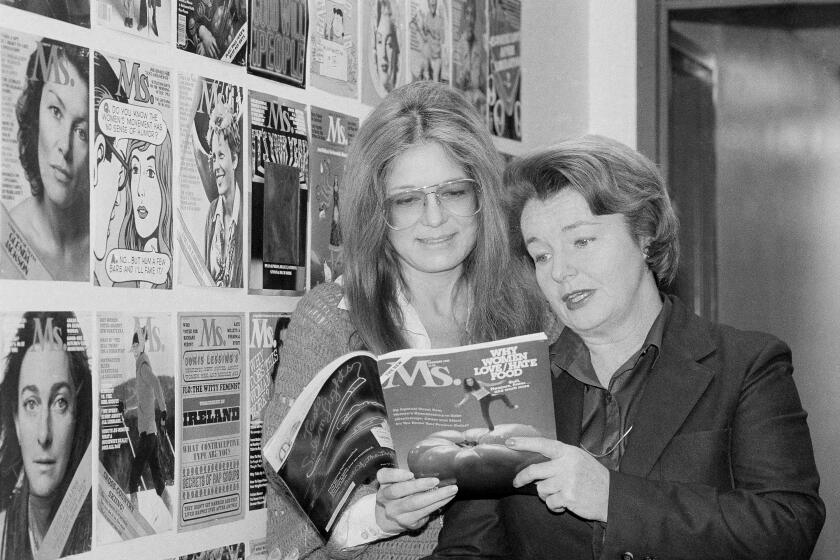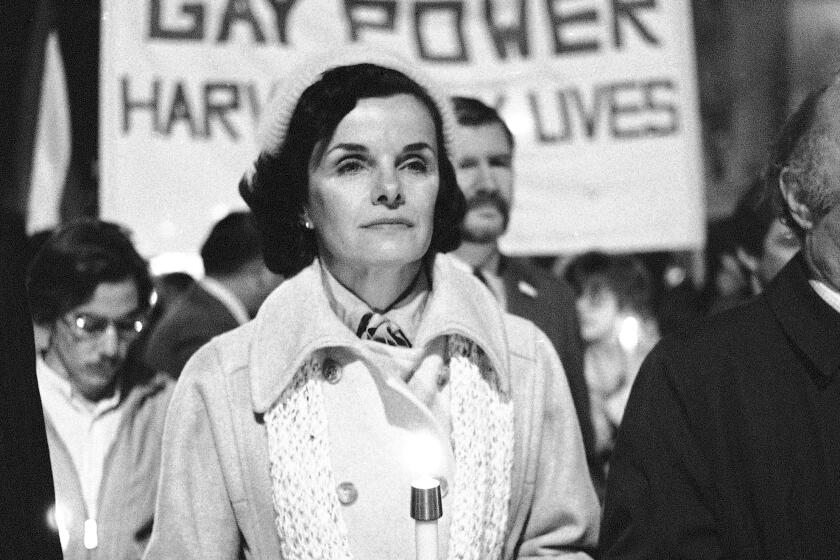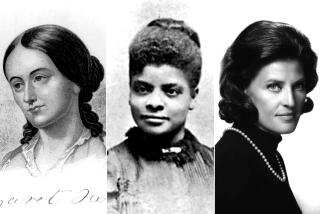Why don’t women make as much as men? Economist Claudia Goldin has some Nobel Prize-winning answers

- Share via
An American woman has won the Nobel Prize in economics for her work studying the economic lives of American women.
How poetic is that?
No less poetic: Harvard professor Claudia Goldin, 77, is the only woman ever to have received the award by herself, with no (male) collaborators.
In her work, Goldin has tried to explain why the wage gap between men and women has persisted, and why women so often are discouraged when it comes to pursuing more advanced job opportunities.
“Women are now more educated than men,” Goldin told the Associated Press on Monday, after she’d won the prize. “They graduate from college at much higher rates than men. They do better in high school than men do. So why are there these differences?”
To answer that, she has delved into 200 years of data about women in the workforce, discovering all kinds of surprising things along the way.
Claudia Goldin became only the third woman to win the Nobel Prize in economics Monday, in recognition of her research on women in the labor market.
For example, contrary to conventional wisdom, women’s share of the workforce actually declined during the Industrial Revolution.
Later, in the 20th century, marriage — and laws limiting married women’s ability to work — proved to be a serious barrier to women’s employment. In the second half of the century, with many of the legal barriers gone, Goldin discovered, parenthood was the main factor animating the wage gender gap.
It’s been generally assumed that women earn less than men because of differences in education and the jobs they pursue. That may have been true at one time. “However,” said the Nobel committee on Monday, “Goldin has shown that the bulk of this earnings difference is now between men and women in the same occupation, and that it largely arises with the birth of the first child.”
Looking back at the pioneering feminist publication is a chilling lesson in how much things for women have stayed the same.
Women, she has pointed out, pay a “motherhood penalty” while men enjoy a “fatherhood premium.”
“Women are essential workers,” Goldin explained in a 2022 lecture. “But they are essential workers in two places at the same time. … She’s the professional who’s on call at home and he’s the professional who’s on call at the office.”
As she told the New York Times on Monday, “We’re never going to have gender equality until we also have couple equity.”
A new anti-gay-marriage push, energized by the overturning of abortion rights, is trying to make Americans believe the institution of marriage is diminished by same-sex unions.
In a new working paper for the National Bureau of Economic Research, Goldin writes that the golden era of American women’s rights lasted from 1963 to 1973. Of the 155 important moments she highlights, 45% took place in those years.
“That decade,” she writes, “politically and socially tumultuous for reasons distinct from the women’s movement, contains the Equal Pay Act of 1963, Title VII of the 1964 Civil Rights Act, the publication of ‘The Feminine Mystique,’ the formation of the National Organization for Women (NOW), the shift to coeducation among many of the Ivies and little Ivies, the passage of the ERA in the House and Senate, Title IX of the 1972 Education Act, the spread of no-fault and unilateral divorce laws among the states, the first edition of Ms. Magazine, and Roe v. Wade, among other highlights.”
We’re used to men involved in sexual scandals, but women are proving that they, too, have lousy judgment.
So much progress, Goldin adds, “also produced a powerful anti-women’s rights movement that rapidly joined with the antiabortion and anti-gay/woke lobbies to remain a potent force in America to this day.”
In that decade of profound change, there is one particular thing that happened — or more precisely didn’t happen — that might have profoundly changed the course of women’s workplace progress: the failure of the 1971 Comprehensive Child Development Act.
The bill would have created a multibillion-dollar national day-care system and it would have had the added bonus of helping single mothers stay off the welfare rolls. Can you imagine how different so many of our lives would be if, as a nation, we had committed to such an initiative?
The first female California senator made a profound mark embracing progressive causes such as an assault weapons ban and damning the CIA’s use of torture.
But then-President Nixon, who first supported the bill, ended up vetoing it, as Goldin notes in her working paper. Why? Blame it on the remnants of anti-communist hysteria. Nixon was persuaded that implementing national day care would be tantamount to surrendering children to the state.
“For the Federal Government to plunge headlong financially into supporting child development,” he wrote in his veto statement, “would commit the vast moral authority of the National Government to the side of communal approaches to child rearing over against the family-centered approach.”
Goldin’s interests are wide-ranging but always focused on women: She has studied how the advent of oral contraceptives has changed women’s career and marriage decisions, the effect that blind auditions have had on increasing the number of women in symphony orchestras, and how women’s careers so often take a back seat to the careers of their husbands.
Plus-size influencers and a new novel set in Paris are an antidote to Fashion Week’s body-shaming parades
Having mined so much data, Goldin has fascinating insights about how women’s work and home priorities have shifted. In her 2020 lecture, “Journey Across a Century of Women,” she divides the priorities of college-educated women who were born over the course of a century — between 1878 and 1978 — into five distinct groups:
Those born between 1878 and 1897 chose families or careers.
Those born between 1898 and 1923 had jobs then families.
Those born between 1924 and 1943 had families then jobs.
Those born between 1944 and 1957 had careers then families.
And those born between 1958 and 1978 expect to have careers and families at the same time.
This more or less comports with the experience of my grandmother, my mother and me.
To illustrate the 100-year transition from career or family to career and family, Goldin invokes two American politicians: suffragette Jeannette Rankin, born in 1880, the first American woman elected to Congress, who never married and never had children, and Tammy Duckworth, born in 1968, the first U.S. senator to give birth while in office and the first to bring a baby onto the floor of the Senate during a session. (“Although,” Goldin jokes, “many would say there have been babies in Congress before that.”)
In some ways, Goldin’s research puts to rest that silly old question about whether women can have it all. Of course they can. They always have, one way or another. She shows us, however, that women receive lower wages than men for choosing children and a career.
@robinkabcarian
More to Read
A cure for the common opinion
Get thought-provoking perspectives with our weekly newsletter.
You may occasionally receive promotional content from the Los Angeles Times.

















